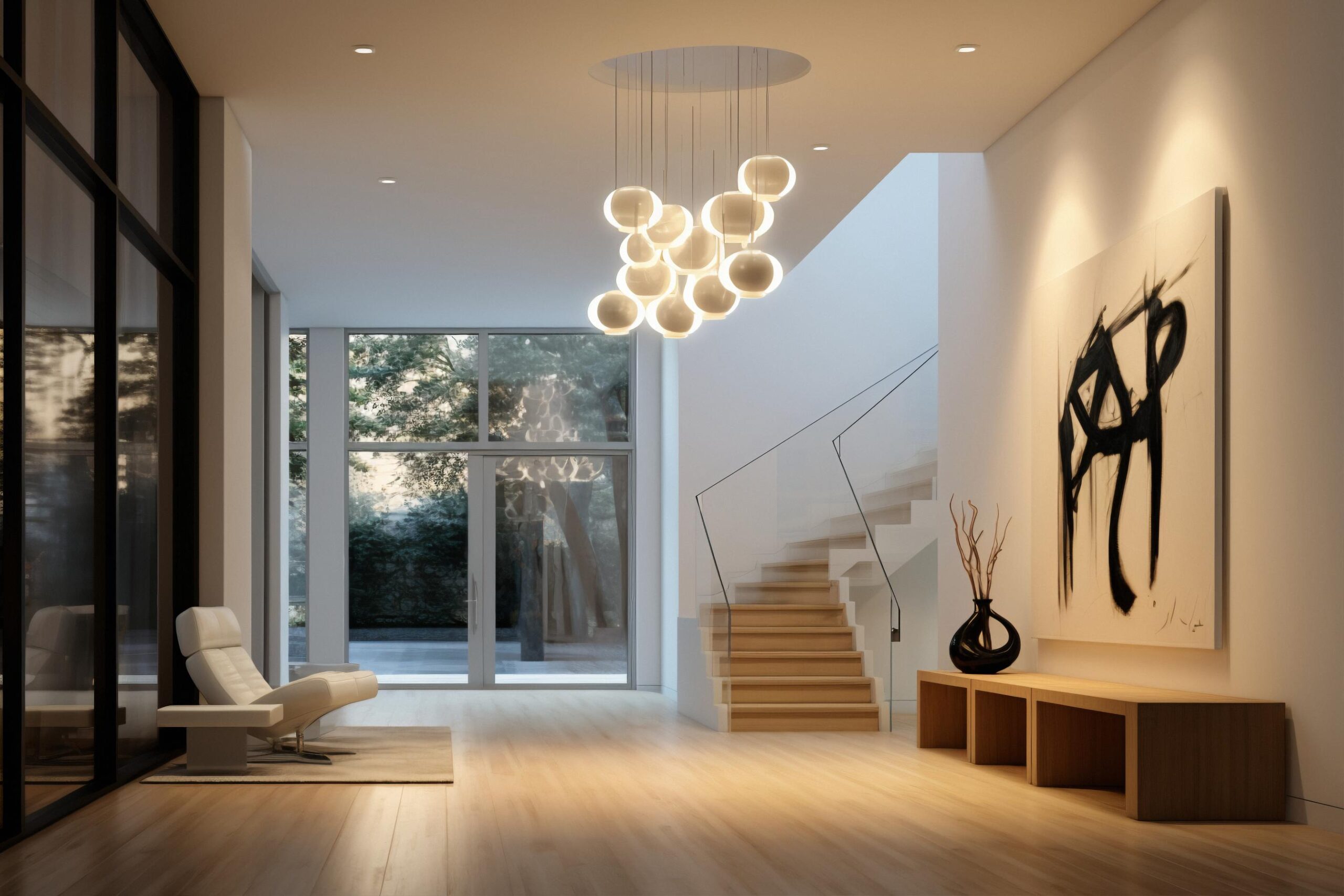In recent years, Qatar has seen rapid development in both its urban and infrastructural landscape. From state-of-the-art stadiums to futuristic skyscrapers, the country is embracing innovation on all fronts. This progress is not just about aesthetics and growth — it’s deeply connected to sustainability and smart technology. As the government and private sector push toward a greener, more connected future, lighting companies in Qatar are also evolving. They are not only meeting current demands but also anticipating future needs through smart and sustainable solutions.
Smart Lighting: The New Standard
What Is Smart Lighting?
Smart lighting refers to lighting systems that are automated, sensor-driven, and capable of being controlled remotely. These systems often rely on the Internet of Things (IoT) to integrate with other smart technologies in homes, offices, and public spaces.
This technology allows users to adjust brightness, color, and timing of lights using apps, voice commands, or centralized systems. It’s not just about convenience; it’s also about optimizing energy usage, reducing waste, and enhancing user experience.
Adoption in Residential and Commercial Spaces
In Qatar, the rise in smart home installations is driving demand for intelligent lighting solutions. Homeowners are increasingly opting for systems that provide flexibility and reduce electricity bills. In commercial environments, such as office buildings and malls, smart lighting contributes to better energy efficiency, lower operational costs, and improved comfort for occupants.
Public infrastructure is also benefiting. Smart street lighting, which adjusts brightness based on foot or vehicle traffic, is being implemented in urban planning projects. This ensures roads are lit when needed, reducing power consumption during off-peak hours.
Sustainable Lighting: A National Priority
Why Sustainability Matters in Qatar
Qatar’s extreme climate, reliance on air conditioning, and high energy consumption have placed significant pressure on its natural resources. To counterbalance these effects, sustainability has become a national priority. The country’s National Vision 2030 outlines clear goals for environmental development, and the lighting industry plays a key role in achieving these targets.
Lighting consumes a substantial portion of electricity in buildings. Transitioning to sustainable options such as LEDs and solar-powered lights can drastically reduce this burden.
LEDs and Energy-Efficient Systems
LED technology is no longer a novelty — it has become a necessity. Compared to traditional incandescent or fluorescent bulbs, LEDs consume up to 80% less energy and last significantly longer.
Lighting solutions Qatar providers are increasingly offering LED-based products that are not only cost-effective but also environmentally friendly. These systems often come with dimming features, motion sensors, and automation, further reducing waste.
Beyond buildings, LED systems are being used in traffic lights, public parks, and street lighting across the country. This widespread adoption reflects a national effort to integrate sustainable solutions in everyday infrastructure.
Solar Lighting in Desert Environments
Qatar’s abundant sunlight presents a unique opportunity for solar-powered lighting. Several projects, both public and private, are exploring or actively implementing solar lighting solutions for pathways, parking lots, and remote areas where grid connections are expensive or impractical.
Incorporating solar energy into lighting is more than a trend — it’s a strategic move. It reduces dependence on fossil fuels and offers reliable alternatives during power outages. Moreover, it aligns with Qatar’s efforts to diversify its energy mix.
Challenges Faced by the Industry
Cost of Implementation
One of the significant challenges facing lighting companies in Qatar is the initial cost of smart and sustainable technologies. While these systems save money in the long run, the upfront investment can be a deterrent for smaller businesses and homeowners.
To combat this, companies are exploring flexible financing options, leasing models, and partnerships with developers to spread costs and encourage adoption.
Education and Awareness
Many potential users are not fully aware of the benefits of smart and sustainable lighting. There’s often a lack of understanding regarding energy savings, longevity, and ease of use.
To address this, companies are investing in marketing campaigns, workshops, and showrooms that allow people to experience the technology first-hand. These efforts aim to demystify the products and show their practical value.
Integration with Existing Infrastructure
Retrofitting older buildings with new lighting technology can be complex. Wiring systems, building layouts, and compatibility issues can all complicate installation.
However, modular systems and wireless options are making retrofitting easier. Smart bulbs that can work with existing sockets and platforms like Zigbee or Wi-Fi-enabled controls are minimizing the need for significant structural changes.
Emerging Trends in the Qatari Lighting Industry
Human-Centric Lighting (HCL)
A growing trend in the lighting industry is human-centric lighting — systems designed to support human health, mood, and productivity. These lights adjust color temperature and intensity throughout the day to mimic natural light patterns.
In offices, schools, and hospitals, HCL systems are being introduced to improve focus, reduce fatigue, and promote well-being. Lighting solutions Qatar providers are beginning to incorporate this science-backed approach into their product lines.
Smart City Integration
Smart cities require smart lighting. Qatar’s ambition to build intelligent urban environments is closely tied to lighting infrastructure. This includes not only streetlights but also lighting in public transport hubs, stadiums, and event venues.
Systems are being designed to collect data, monitor energy use, detect faults, and even communicate with other city services like emergency systems and traffic management. This level of integration boosts safety, efficiency, and long-term sustainability.
Design Meets Function
Modern lighting is not just functional — it’s a central design element. Qatar’s architecture, which blends tradition with modernity, demands lighting that complements both aesthetics and performance.
Lighting companies are working with architects and designers to create fixtures that reflect cultural heritage while utilizing cutting-edge technology. Custom lighting solutions for mosques, museums, and national landmarks are a testament to this creative collaboration.
Role of Government and Regulation
Supportive Policies and Incentives
Government policy in Qatar is increasingly supportive of energy efficiency. Regulations now encourage or mandate the use of energy-saving lighting in new construction projects. Green building certifications like GSAS (Global Sustainability Assessment System) further promote eco-friendly lighting standards.
Subsidies and incentives for adopting sustainable technologies are also being introduced. These can help both commercial and residential customers transition more easily to efficient systems.
Standardization and Quality Control
As the market grows, there’s a push to ensure products meet international standards for safety, efficiency, and environmental impact. This protects consumers and maintains industry integrity.
Lighting companies in Qatar are investing in R&D and quality assurance to ensure their offerings are competitive globally. The focus is on long-term value, not just short-term profit.
Looking Ahead: The Future of Lighting in Qatar
The future looks bright for the lighting industry in Qatar. As smart cities evolve and sustainability takes center stage, lighting will be at the heart of this transformation.
Artificial intelligence (AI) and machine learning could soon play a bigger role in lighting systems, optimizing usage patterns based on user behavior and environmental conditions. Similarly, augmented reality (AR) might assist in planning and visualizing lighting designs for new developments.
The collaboration between tech companies, construction firms, designers, and lighting solutions Qatar providers will become even more critical. Together, they will shape environments that are smarter, greener, and more human-friendly.
Final Thoughts
Qatar is at a pivotal point in its journey toward sustainability and technological advancement. The lighting industry, once focused solely on illumination, is now a key player in this evolution. From smart homes to solar-powered streets, the transformation is well underway.
By embracing innovation, educating the market, and aligning with national goals, lighting companies in Qatar are not only adapting, they’re leading the way. The path forward will involve challenges, but the opportunities for impact are even greater.



